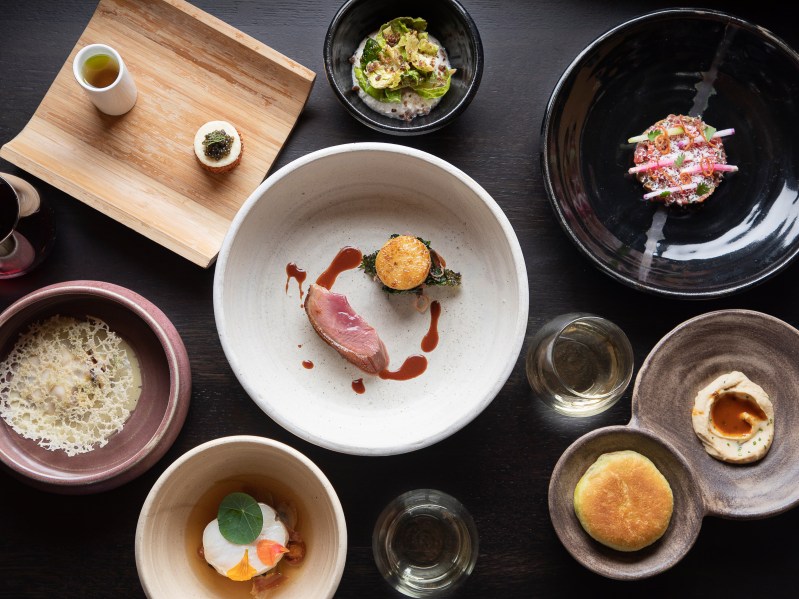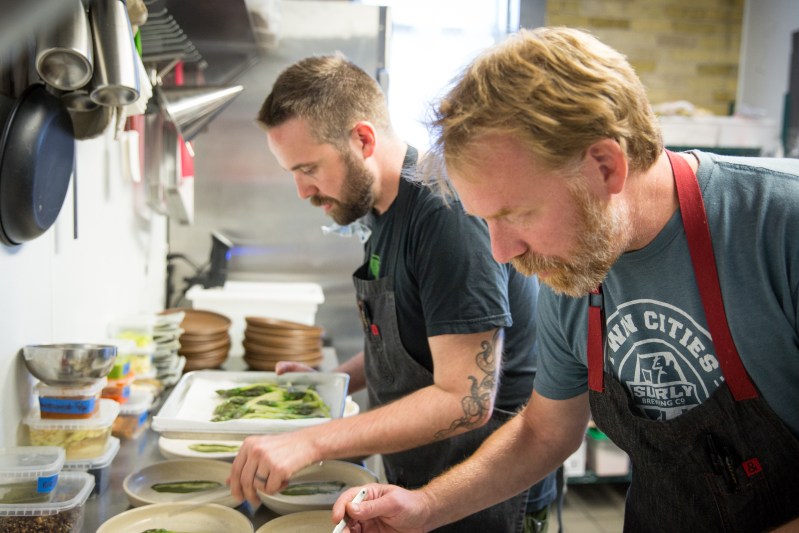
On holidays, there are things that are done for the sake of tradition. Red hearts are strung about, eggs are painted, flags are flown, pumpkins are carved, and turkey is eaten. Turkey on Thanksgiving is just one of those givens in life. The question, “What are you having for dinner” on Thanksgiving day, is never something that needs to be asked. That would just be ridiculous. But what if – caused by some extremely blasphemous flaw in your genetic design – you (gasp) don’t care for turkey? What if you’ve spent your entire life hiding your distaste for this blandest of birds, and your whole Thanksgiving career has been a lie? First of all, forgive yourself. Turkey can be dry and gross and, if we’re honest, is probably the least exciting protein out there. Save for, perhaps, boneless, skinless chicken breast. That’s why we love a non-traditional Thanksgiving meal. This year, give yourself some grace and step away from the Thanksgiving turkey. Instead, consider duck.
Chefs Dan Jacobs and Dan Van Rite, of esteemed Milwaukee restaurants DanDan and EsterEv, have shared with The Manual their famous dry-aged roast duck as an amazing alternative to a boring turkey this Thanksgiving. These five-time James Beard-nominated chefs are determined to turn your tired holiday table into something deliciously exciting with this recipe, and we are here for it. Their amazing dry-aged roast duck recipe features an easy dry-aging technique to tenderize the meat, develop flavor, and ensure extra crispy skin. The best part is there’s absolutely no fancy equipment or ingredients necessary.

Chef Dan Jacobs + Dan Van Rite’s Dry-Aged Duck Recipe
While duck is pretty widely available in most grocery stores these days, finding the right one for this recipe may be tricky. Chef Dan Van Rite says, “We always recommend fresh duck if you have the option. We source our duck from D’Artagnan, which sells fresh duck breast (4 ct) for $44.99 at 7.8oz/ breast. We like the Rohan duck because the skin is a bit thicker than your typical Peking duck, which gives it a gamier flavor profile. Rohan duck has bigger breasts and smaller legs, which is what you want, compared to Peking duck which has smaller breasts and bigger legs.”
- 4 fresh duck breasts
- Fresh thyme, to taste
- Cinnamon, to taste
- Garlic, to taste
- Salt, to taste
- 2 tablespoons honey
Method:
-
Leave the duck breasts intact on the rib cage. Legs and backbone are stored separately.
-
Let the duck chill in your designated dry age area in the fridge for 14 days (even a mini-fridge would work).
-
Prep: Prepare your bed of thyme, cinnamon, garlic + other herbs to your liking on a half-sheet tray.
-
Place the breast and legs on the bed of herbs; smother the surface of the skin with 2 tbsp of honey
-
Generously season with salt.
-
Roast in the oven on a wire rack for 12-15 mins at 400F.
-
Remove from the oven and let rest for 12-15 mins before slicing. Duck is best served like a medium-rare steak.
Editors' Recommendations
- Your guide to the pescatarian diet for healthier living
- Pro tips from Chef Eduardo Garcia for cooking outdoors like a true mountain man
- How to age fish at home (your new favorite hobby)
- How to make hard apple cider from the comfort of your home
- How to make Vietnamese pho, a perfect soup for any time of the year




